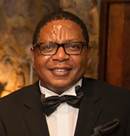Day 1 :
Keynote Forum
Vsevolod V. Gurevich
Vanderbilt University Medical Center, USA
Keynote: Recent advancement and discoveries in synthetic biology
Time : 10:20-10:55

Biography:
Vsevolod V. (Seva) Gurevich has completed his PhD in 1989 from Shemyakin Institute of Bio-organic Chemistry, Moscow, Russia, and postdoctoral training (1991-5) in the laboratory of Dr. J.L. Benovic, Thomas Jefferson University, Philadelphia, PA. He is Professor of Pharmacology at Vanderbilt University. He has published more than 160 papers in reputed journals and has been serving as an editorial board member of several journals.
Abstract:
Synthetic biology is a relatively new and very exciting brunch of research. In simple terms, its goal is to create living cells that do what we want. To achieve this, we need precise mechanistic knowledge of cellular processes. In terms of complexity, living systems exceed everything studied by natural sciences. Complex networks of intimately intertwined signaling pathways regulate cellular functions. Mechanistic understanding how the integration of multiple inputs produces coherent behavior is one of the major challenges of cell biology. Perfectly timed highly regulated protein–protein interactions and precise targeting of the “output” proteins to particular substrates are a common themes of in cellular signaling. Synthetic biology approaches this at different levels. Many signaling proteins consist of numerous domains. By mixing and matching domains, in essence following in the footsteps of evolution, we can create new signaling proteins with unique functions. This is particularly applicable to scaffolding proteins, which organize and direct signaling. Another level is subtle reengineering of signaling proteins. Most proteins are multi-functional. Disrupting or enhancing individual functions by targeted mutations, ideally without affecting other functions of the protein, generate tools that can channel cell signaling in desired direction. Creating new proteins with subtly or drastically modified functionality paves the way to better understanding of the mechanisms used by living organisms. As an added bonus, engineered proteins have greater therapeutic potential than currently used small molecules, which tend to be one-trick ponies. Thus, synthetic biology holds many exciting promises. It is our job to convert the understanding of biochemical mechanisms into the ability to create designer cells for scientific and therapeutic uses.
Keynote Forum
Makobetsa Khati
CSIR Biosciences, South Africa
Keynote: Synthetic RNA molecule mitigates HIV-induced apoptosis of cardiomyocytes and also prevents HIV infection
Time : 11:15-11:50

Biography:
Makobetsa Khati is Head of the Emerging Health Technologies Department at CSIR Biosciences. He is also an Honorary Research Associate in the Department of Medicine at Groote Schuur Hospital and the University of Cape Town. Makobetsa holds several degrees including a Master’s in Molecular Medicine from the Imperial College London, a Master of Public Health from the School of Public Health and Family Medicine, University of Cape Town, and a Doctorate in Molecular Pathology from the Sir William Dunn School of Pathology, University of Oxford.
Abstract:
Chronic HIV infection causes a broad range of clinical complications, some of which remain poorly understood. One such complication is HIV-associated cardiomyopathy (HIVCM). In this study, we evaluated a novel approach to mitigate HIVCM using synthetic RNA molecules called aptamers. Specifically, we used a shortened synthetic derivative of anti-gp120 aptamer called UCLA1. The aptamer protected cardiomyocytes from HIV induced apoptosis. Furthermore, the aptamer also prevented infection of human macrophages and CD4+ T cells by a broad range of clinical isolates of HIV-1 from different subtypes. Taken together, these data argue in favor of further development of this RNA synthetic molecule to prevent HIV infection in uninfected individuals, and also to mitigate AIDS pathogenesis such as HIVCM in already infected individuals.
Keynote Forum
Ravi K Birla
University of Houston, USA
Keynote: Tissue and organ fabrication for the heart
Time : 11:50-12:25

Biography:
Ravi Birla has completed his PhD from the University of Michigan, Ann Arbor and is currently with the Department of Biomedical Engineering at the University of Houston, where he also serves as Director of the Artificial Heart Laboratory. His research is in Cardiovascular Tissue Engineering and he has published over 40 peer reviewed scientific. He has extensive experience in the development of 3D models for heart muscle, blood vessels, tri-leaflet heart valves, heart pumps, bio-artificial ventricles and bio-artificial hearts. Dr. Birla holds several patents in the area of cardiovascular tissue engineering. He is also actively engaged in education and teaching related activities and has recently published a comprehensive textbook in the area of functional tissue engineering.
Abstract:
Treatment of cardiovascular disorders remains a major medical challenge. Pharmacological interventions, mechanical assist devices and heart transplantation have provided life saving options. While heart transplantation has been the most successful treatment modality for end stage heart failure, chronic shortage of donor organs has limited widespread applicability. Tissue engineering has tremendous potential to provide alternative treatment modalities that could help alleviate the donor heart crisis. Cardiac tissue engineering strategies are focused on the development of functional 3-dimensional (3D) patches, fabricated by culturing cells within a natural or synthetic scaffold. Applied to a clinical scenario, 3D heart muscle could be sutured onto the surface of injured left ventricular tissue to support/augment contractile function.
Research at the Artificial Heart Laboratory (AHL) is focused on the development of 3D cardiovascular tissue constructs. We have projects focused on the development of heart muscle, blood vessels, tri-leaflet valves, cell based cardiac pumps, bioartificial ventricles and hearts. In addition, we have projects focused on supporting technologies. Th ese include perfusion systems to support long-term culture and bioreactors for electromechanical stimulation. During the past several years, we have developed the building blocks required for the fabrication and culture of cardiovascular tissue constructs – in this presentation, we will provide an overview of platform technology required to bioengineer functional 3D cardiovascular tissue constructs.
